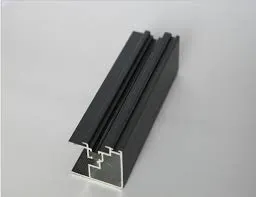Exploring the Art and Technique of Wrought Iron Craftsmanship and Design
The Artistry of Wrought Iron Work
Wrought iron work stands as a testament to the remarkable craftsmanship and artistic flair that have graced society for centuries. Known for its durability and malleability, wrought iron has been a preferred material for artisans and builders alike since antiquity. Its origins can be traced back to the early days of metalworking, where blacksmiths would manually shape iron into intricate designs, leading to a diverse array of functional and decorative creations.
One of the defining characteristics of wrought iron is its ability to be worked when heated, making it an ideal medium for artistic expression. Unlike cast iron, which is brittle and difficult to manipulate after cooling, wrought iron retains its flexibility during the forging process. This allows skilled craftsmen to produce ornate gates, railings, sculptures, and furniture that not only serve practical purposes but also elevate architectural aesthetics.
The beauty of wrought iron work lies in its intricacy. Many wrought iron creations feature elaborate scrollwork, floral patterns, and geometric designs, showcasing the artisan's attention to detail and expertise. Each piece can be tailored to reflect the unique style and preferences of the client, resulting in customized works of art that add character to any space. Whether it's a grand entrance gate that welcomes guests with elegance or a delicate balcony railing that offers a hint of romance, wrought iron work can transform the ordinary into the extraordinary.
Historically, wrought iron was a symbol of status and wealth. In Europe during the Middle Ages, it became an essential feature in the construction of castles and mansions. Elaborate iron gates and window grills not only provided security but also conveyed a sense of grandeur and sophistication. The craftsmanship involved in creating these pieces was highly respected, with blacksmiths often regarded as master artisans. In many cultures, these artisans were organized into guilds, where they honed their skills and passed down traditional techniques from generation to generation.
wrought iron work

In addition to its aesthetic value, wrought iron work is celebrated for its longevity. Unlike other materials that may deteriorate over time, wrought iron structures can withstand the elements and endure for decades, if not centuries. Properly maintained, wrought iron fences and gates can remain as striking today as they were when first installed. This durability makes wrought iron a practical choice for both historic restorations and modern constructions.
Today, the revival of traditional wrought iron techniques has captured the interest of contemporary designers and architects. Many adhere to the time-honored methods while adding modern twists, incorporating innovative designs that blend seamlessly with various architectural styles. From rustic to industrial chic, wrought iron continues to be a versatile material that complements diverse environments.
Moreover, the rise of sustainable practices has further bolstered the allure of wrought iron work. As a recyclable material, wrought iron aligns with environmentally conscious building trends, allowing for the creation of stunning pieces that are both beautiful and eco-friendly. In addition, the art of wrought iron work can contribute to local economies by fostering artisan communities and supporting traditional trades.
In conclusion, wrought iron work is much more than a mere construction material; it is a form of artistic expression and cultural heritage. Its rich history, combined with its timeless appeal and adaptability, makes it a celebrated choice in both functional and decorative applications. As we continue to appreciate the beauty of wrought iron, we also honor the skilled artisans who breathe life into this enduring medium, ensuring that the elegance of wrought iron work will resonate for generations to come.
-
Wrought Iron Components: Timeless Elegance and Structural StrengthNewsJul.28,2025
-
Window Hardware Essentials: Rollers, Handles, and Locking SolutionsNewsJul.28,2025
-
Small Agricultural Processing Machines: Corn Threshers, Cassava Chippers, Grain Peelers & Chaff CuttersNewsJul.28,2025
-
Sliding Rollers: Smooth, Silent, and Built to LastNewsJul.28,2025
-
Cast Iron Stoves: Timeless Heating with Modern EfficiencyNewsJul.28,2025
-
Cast Iron Pipe and Fitting: Durable, Fire-Resistant Solutions for Plumbing and DrainageNewsJul.28,2025
-
 Wrought Iron Components: Timeless Elegance and Structural StrengthJul-28-2025Wrought Iron Components: Timeless Elegance and Structural Strength
Wrought Iron Components: Timeless Elegance and Structural StrengthJul-28-2025Wrought Iron Components: Timeless Elegance and Structural Strength -
 Window Hardware Essentials: Rollers, Handles, and Locking SolutionsJul-28-2025Window Hardware Essentials: Rollers, Handles, and Locking Solutions
Window Hardware Essentials: Rollers, Handles, and Locking SolutionsJul-28-2025Window Hardware Essentials: Rollers, Handles, and Locking Solutions -
 Small Agricultural Processing Machines: Corn Threshers, Cassava Chippers, Grain Peelers & Chaff CuttersJul-28-2025Small Agricultural Processing Machines: Corn Threshers, Cassava Chippers, Grain Peelers & Chaff Cutters
Small Agricultural Processing Machines: Corn Threshers, Cassava Chippers, Grain Peelers & Chaff CuttersJul-28-2025Small Agricultural Processing Machines: Corn Threshers, Cassava Chippers, Grain Peelers & Chaff Cutters












